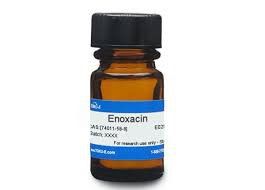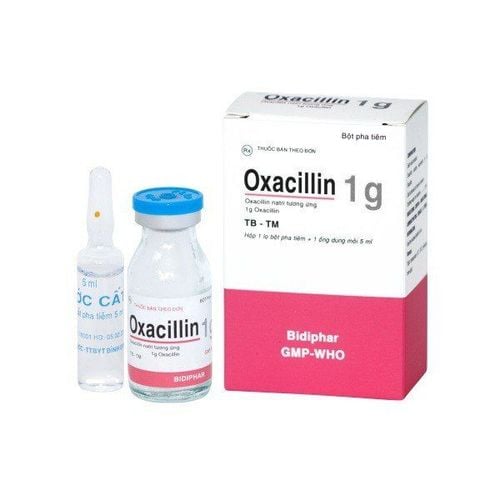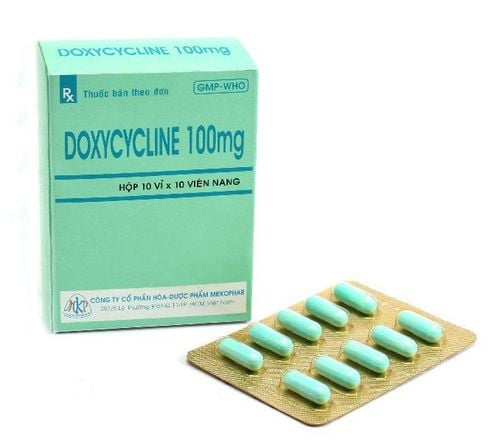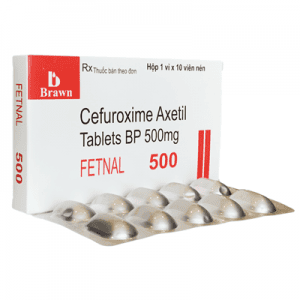This is an automatically translated article.
Blaucef is an antibiotic against infections of the 3rd generation Cephalosporin group, in the form of injection. Injectable antibiotics are usually not the preferred choice for any infection, usually when the oral form is ineffective or the infection is moderate to severe.
1. The effect of the drug Blaucef
Blaucef medicine has ingredients including Ceftriaxone 1000mg and other excipients just enough for 1 vial. The drug is prepared in the form of a powder for solution for injection. Ceftriaxone is a 3rd generation cephalosporin antibiotic with broad-spectrum antibacterial activity. The mechanism of action is inhibition of bacterial cell wall synthesis by binding to one or more penicillin-binding proteins (PBPs), causing inhibition at the final step of cell wall synthesis. Ceftriaxone can be stable to Beta lactamase enzyme secreted by gram-negative or gram-positive bacteria, so the spectrum of activity is more against many types of gram-negative and gram-positive bacteria than penicillin.
Ceftriaxone is not absorbed from the gastrointestinal tract when taken orally, so it is usually administered intravenously or intramuscularly. The drug can achieve 100% intramuscular bioavailability, after entering the body the drug is widely distributed in tissues and body fluids and can be excreted through the placenta and into breast milk.
2. Indications and contraindications of the drug Blaucef
Indications:
The drug Blaucef is bactericidal, indicated for use in cases of moderate to severe infections caused by microorganisms sensitive to Ceftriaxone including:
Meningitis, except meningitis caused by Listeria and Lyme disease ; Genitourinary tract infections including pyelonephritis, cystitis, urethritis, cervicitis and vaginitis... Severe respiratory tract infections such as pneumonia and purulent tonsillitis... Article treatment of otitis media. Infections caused by gonorrhea, typhoid and syphilis; Sepsis, bone and joint infections, skin and subcutaneous tissue infections. Bacterial peritonitis, cholecystitis, cholangitis and other gastrointestinal infections Prophylaxis of infections in surgical and laparoscopic procedures such as vaginal or abdominal surgery. Contraindications:
Do not use Blaucef in the following cases:
People with hypersensitivity to the active ingredient Ceftriaxone or to cephalosporins or to any other excipients. Patients with a history of anaphylaxis to penicillin because of the risk of cross-allergic reactions. For intramuscular injection: Do not use the drug if sensitive to lidocaine, not for children under 30 months. In this case, the intravenous route should be used instead.
3. Dosage and how to use Blaucef
3.1 How to take the drug Blaucef Blaucef is used by intramuscular or intravenous injection. Instructions for mixing solution for injection as follows:
Solution for intramuscular injection: Use 1 vial of Blaucef mixed with 3.5ml of 1% Lidocaine solution. At the same site, do not inject more than 1g intramuscularly. Lidocaine-containing injectable solutions should not be used for intravenous administration. Intravenous solution: Use 1 vial of Blaucef dissolved in 10ml of sterile distilled water. Inject slowly intravenously over a period of 2 - 4 minutes. Injected directly into a vein or can also be injected through a solution infusion line. Solution for infusion: Use this route when you have to take high doses. Mix 2 vials of soluble powder with 40ml of calcium-free infusion solution such as 0.9% sodium chloride solution, 5% glucose or 10% glucose solution or other solution. Do not use with Ringer lactate solution to dissolve powder for infusion. Infusion for at least 30 minutes. Keep the drug Blaucef in a dry place, avoid direct light and the storage temperature should not exceed 30 degrees Celsius. The solution after mixing with distilled water for injection can be kept stable for 2 days at room temperature 25 - 27 degrees C or for 10 days at a temperature of about 5 degrees C. The solutions after mixing with 1% Lidocaine can be kept for 24 hours at room temperature 25 -27 degrees C or 3 days at 5 degrees C. Best to use immediately after mixing. 3.2 Dosage of Blaucef Adults and children over 12 years old: The usual dose is 1-2g per day, injected once or can also be divided equally into 2 times. In severe cases, the dose can be up to 4g/day.
To prevent intraoperative infection, a single dose of 1g should be given intravenously 60 to 90 minutes before surgery.
Treatment of gonorrhea infection: 250mg single intramuscular injection. Can be changed to oral maintenance if needed.
Children from 15 days old to under 12 years old: The daily dose is about 20 - 80mg/kg body weight, injected once or divided equally into 2 times. The total dose in children should not exceed 2g/day.
In the treatment of meningitis, the starting dose is 100mg/kg (not more than 4g). After that, the total daily dose is 100 mg/kg/day, injected once a day.
The usual treatment time with the drug is from 7-14 days. For infections caused by Streptococcus pyogenes, treatment for at least 10 days is required.
Children under 15 days of age Use at a dose of 20 to 50mg/kg/day.
Renal impairment: Adjust dose based on creatinine clearance. When creatinine clearance is less than 10ml/min, the dose of ceftriaxone should not exceed 2g/24 hours.
Hemodialysis: A dose of 2g injected at the end of dialysis is sufficient to maintain effective drug concentrations until the following dialysis session, usually for 72 hours.
4. Undesirable effects of the drug Blaucef
When using the drug Blaucef may encounter side effects including:
Pain, burning sensation at the injection site; Headache, dizziness, lightheadedness, sweating and hot flashes; Diarrhea, skin rash, bloody stools, fever, stomach cramps, stomach pain or bloating, nausea and vomiting, heartburn; Chest pain; Hypersensitivity reactions ranging from mild to severe may also occur. Increased liver enzymes, jaundice, acute renal failure and interstitial pneumonia. When taking Blaucef, the patient should immediately tell the medical staff when the above undesirable effects or other effects occur. Especially when injecting, if you see an abnormality, you need to report it immediately.
5. Notes and cautions when using Blaucef
Because this medication is administered parenterally, careful examination of the patient's allergy history is required prior to administration. Test the patient's skin for an allergic reaction before taking antibiotics. Your doctor will usually check your liver and kidney function before taking the medicine to make sure it's safe to take. Use caution when using Blaucef for people with digestive disorders, especially colitis. Because taking antibiotics increases the risk of causing colitis due to non-susceptible bacteria. This antibiotic is only for use in bacterial infections or as a prophylactic when there is a high risk. Usually, antibiotics given by injection should only be indicated when there is a serious infection and oral use is ineffective, avoiding the risk of drug resistance. Pregnancy and breast-feeding: Blaucef can cross the placental barrier and also enter breast milk. Therefore, it is restricted to pregnant and lactating women. Before use, consult a doctor to carefully weigh the benefits to the mother and the risks to the fetus or nursing infant. Should be avoided for women in the first 3 months. Drug interactions: Some drugs can cause interactions with Blaucef such as: Gentamicin, Colistin, diuretics... If combined, it can increase the possibility of kidney toxicity; Probenecid may decrease the renal clearance of this drug, thereby increasing the plasma concentration of Blaucef. Blaucef is a prescription drug, used only as directed by your doctor. Limit the use of Blaucef unless absolutely necessary to avoid the risk of drug resistance. If you experience any unusual symptoms while taking the drug, you should notify your doctor.













